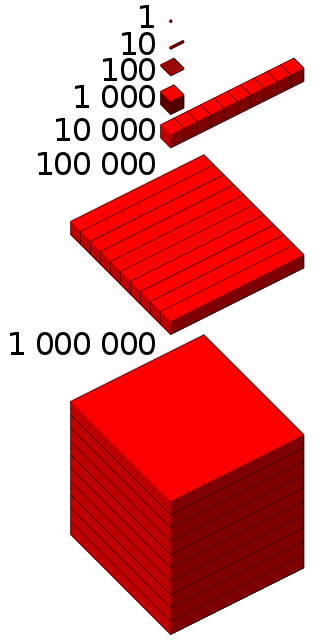Related Research Articles
68 (sixty-eight) is the natural number following 67 and preceding 69. It is an even number.
1000 or one thousand is the natural number following 999 and preceding 1001. In most English-speaking countries, it can be written with or without a comma or sometimes a period separating the thousands digit: 1,000.
400 is the natural number following 399 and preceding 401.
700 is the natural number following 699 and preceding 701.
600 is the natural number following 599 and preceding 601.
800 is the natural number following 799 and preceding 801.
900 is the natural number following 899 and preceding 901. It is the square of 30 and the sum of Euler's totient function for the first 54 positive integers. In base 10 it is a Harshad number. It is also the first number to be the square of a sphenic number.
142 is the natural number following 141 and preceding 143.
132 is the natural number following 131 and preceding 133.
135 is the natural number following 134 and preceding 136.
229 is the natural number following 228 and preceding 230.
185 is the natural number following 184 and preceding 186.

One million (1,000,000), or one thousand thousand, is the natural number following 999,999 and preceding 1,000,001. The word is derived from the early Italian millione, from mille, "thousand", plus the augmentative suffix -one.
235 is the integer following 234 and preceding 236.
148 is the natural number following 147 and before 149.
233 is the natural number following 232 and preceding 234.
257 is the natural number following 256 and preceding 258.
178 is the natural number following 177 and preceding 179.
236 is the natural number following 235 and preceding 237.
238 is the natural number following 237 and preceding 239.
References
- ↑ "Sloane's A000566 : Heptagonal numbers". The On-Line Encyclopedia of Integer Sequences. OEIS Foundation. Retrieved 2016-05-26.
- ↑ "Sloane's A005349 : Niven (or Harshad) numbers". The On-Line Encyclopedia of Integer Sequences. OEIS Foundation. Retrieved 2016-05-26.
- ↑ "Sloane's A001349 : Number of connected graphs with n nodes". The On-Line Encyclopedia of Integer Sequences. OEIS Foundation. Retrieved 2021-12-19.
- ↑ Wells, D. The Penguin Dictionary of Curious and Interesting Numbers London: Penguin Group. (1987), page 119